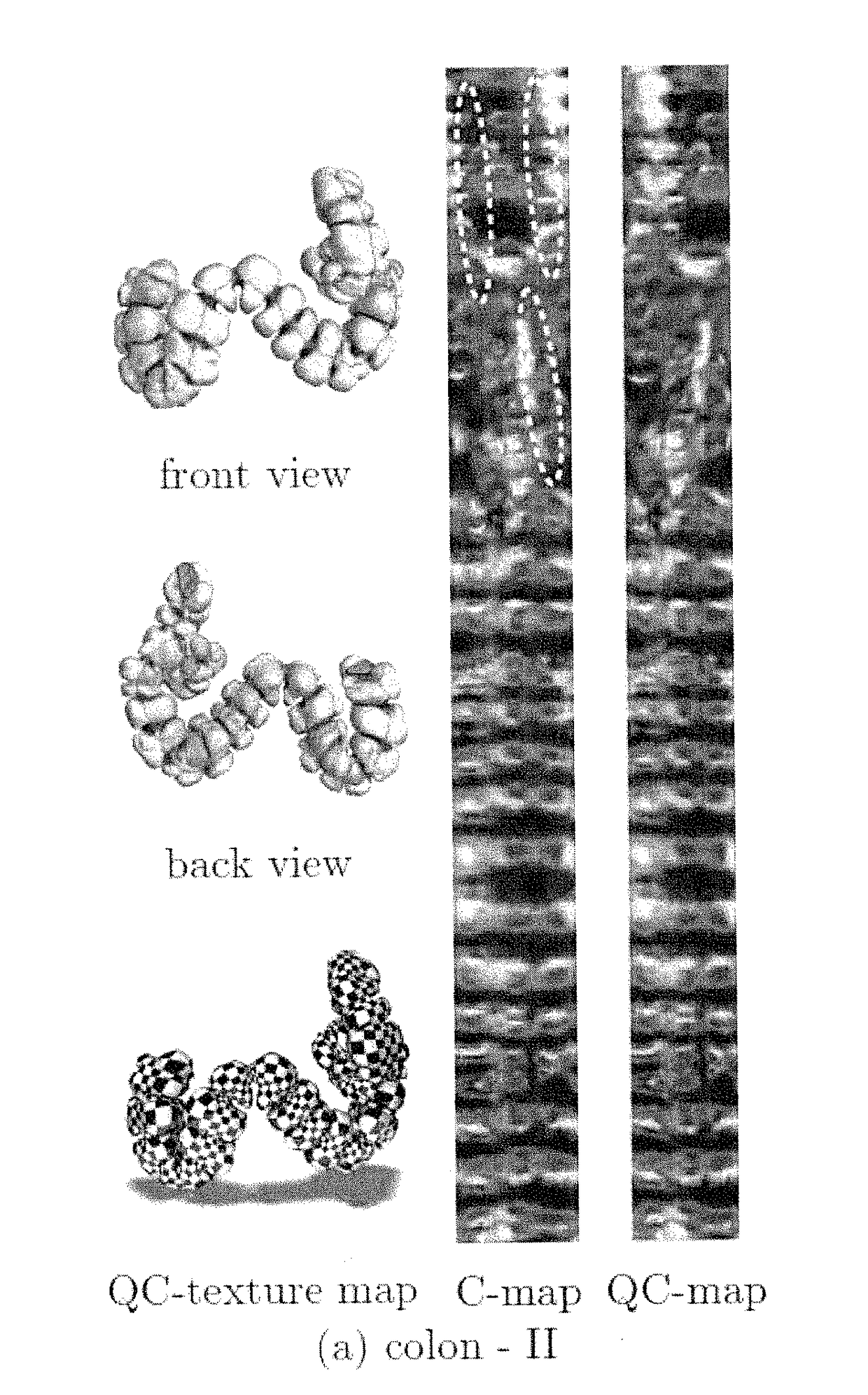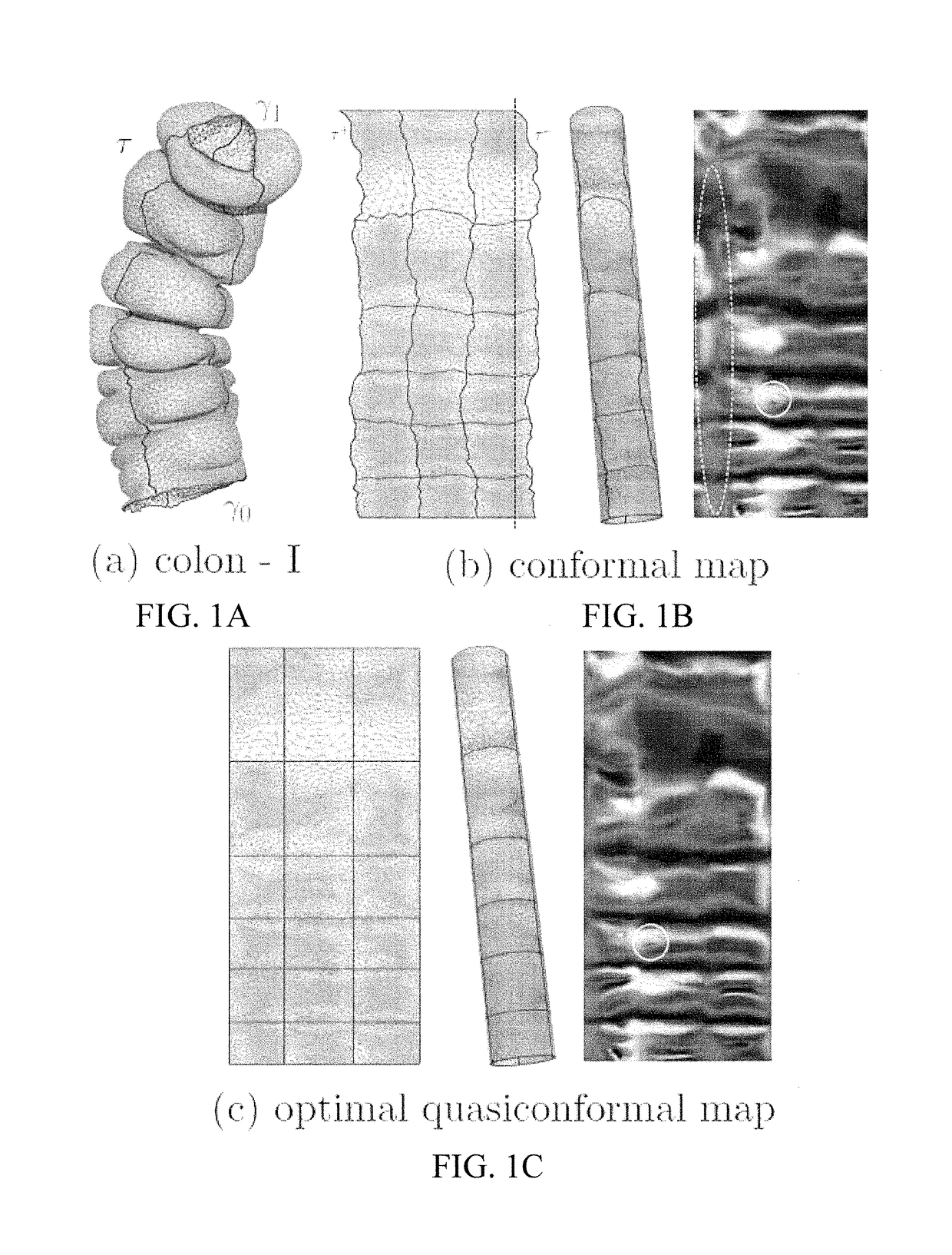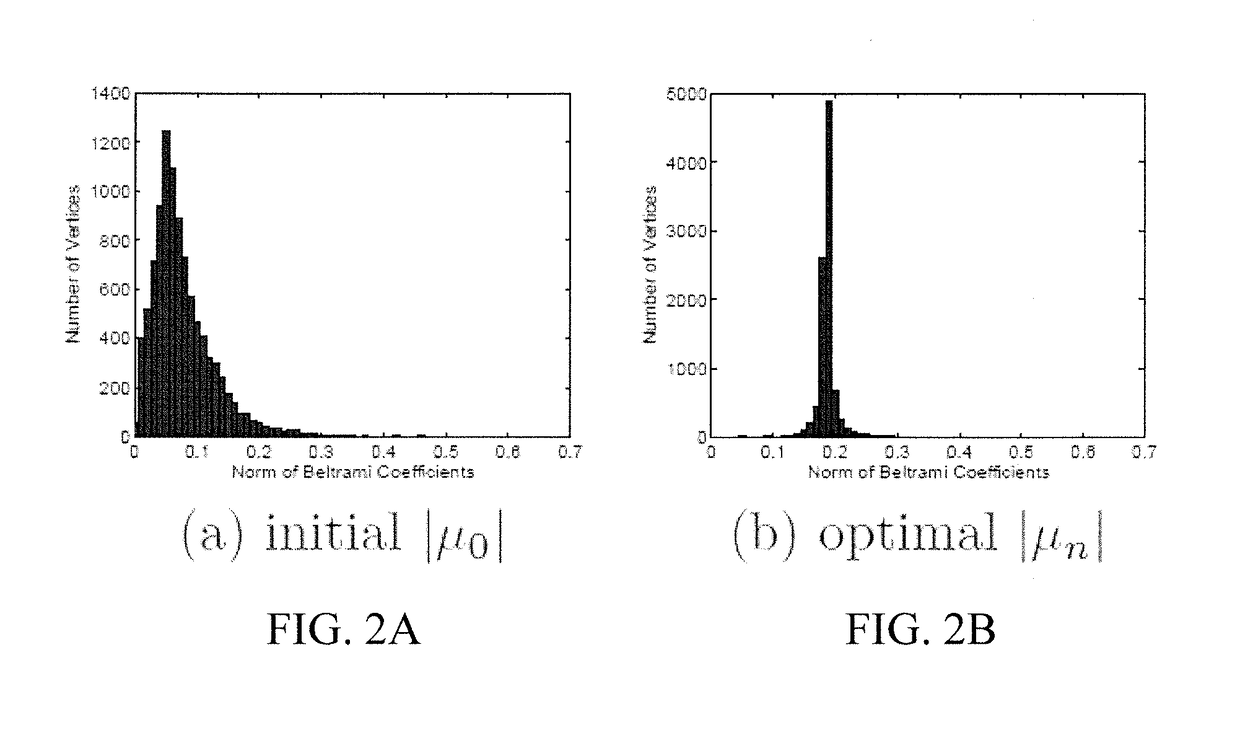Systems and methods for shape analysis using landmark-driven quasiconformal mapping
a technology of landmark-driven quasi-conformity and system-driven mapping, applied in image analysis, image enhancement, instruments, etc., can solve problems such as linear time complexity, and achieve the effect of linear time complexity
- Summary
- Abstract
- Description
- Claims
- Application Information
AI Technical Summary
Benefits of technology
Problems solved by technology
Method used
Image
Examples
example 1
[0149]An algorithm including Step 1 (“slice surface open”), Step 2 (“compute quasi-holomorphic 1-forms”), Step 3 (“compute quasiconformal mapping”), and Step 4 (“optimize quasiconformal mapping”) as described herein was tested on real virtual colonoscopy colon data from the public databases of the National Institute of Biomedical Imaging and Bioengineering (NIBIB) and the National Institute of Health (NIH). Digital cleansing, segmentation, de-noising, and colon inner wall surface extraction were performed on raw computed tomography (CT) scans in the data pre-processing. Then, smoothing, re-meshing, and simplification were performed on triangular meshes. FIG. 1A shows an image of a colon; FIG. 1B shows three images of the conformal map; and FIG. 1C shows three images of the optimal quasiconformal map.
[0150]The taenia coli and haustral folds were extracted on the mean curvature color-encoded conformal mapping images, as illustrated in FIG. 1B. The skeleton of the blue bands (correspon...
example 2
[0155]A landmark-driven canonical quasiconformal mapping according to an embodiment of the subject invention was used during experiments on human facial and brain surfaces to demonstrate its efficiency and efficacy. A set of anatomical facial landmark curves was considered: 1) the curve along eyebrows lb; 2) the geodesic curve between inner eye corners le; 3) the geodesic curve between mouth corners lm; and 4) the symmetry axis curve ln=ln1∪ln2,, split into two parts by nose tip, as shown in FIG. 7A. In canonical mapping, LH={lb, le, lm} and LV={ln} or {ln1, ln2} were set. For brain surfaces, the anatomical sulci and gyri curves were considered. The algorithms were tested on a desktop with 3.7 GHz CPU and 16 GB of RAM. The whole pipeline was automatic. For mapping a facial surface with 120,000 triangles and a brain surface with 20,000 triangles, the average running times were 10 seconds and 3 seconds, respectively. The registration process included two such QC maps and another mappi...
example 3
[0160]A registration algorithm according to an embodiment of the subject invention, as described herein with reference to FIG. 13, was tested on two categories of 3D non-rigid surfaces: 1) human facial surfaces with different expressions from the same subject (see FIGS. 10A-10E), and neutral faces from different subjects (see FIGS. 11A-11B); and 2) human brain surfaces from control group and patient group (see FIGS. 12A-12E). Each pair had large geometry variance and the deformation was quasiconformal. The geometric registration accuracy was evaluated by the energy form E(ƒ) described herein in the section below Equation (8). E(ƒ)=0.03 for FIGS. 10A-10E, E(ƒ)=0.05 for FIGS. 11A and 11B, and E(ƒ)=0.08 for FIGS. 12A-12E. The registration effects can also be visually checked by the consistent texture mapping results.
[0161]The method of the subject invention can take the curve constraints as linear constraints. A comparison test was performed, as shown in FIG. 11B, where 9 point constra...
PUM
 Login to View More
Login to View More Abstract
Description
Claims
Application Information
 Login to View More
Login to View More - R&D
- Intellectual Property
- Life Sciences
- Materials
- Tech Scout
- Unparalleled Data Quality
- Higher Quality Content
- 60% Fewer Hallucinations
Browse by: Latest US Patents, China's latest patents, Technical Efficacy Thesaurus, Application Domain, Technology Topic, Popular Technical Reports.
© 2025 PatSnap. All rights reserved.Legal|Privacy policy|Modern Slavery Act Transparency Statement|Sitemap|About US| Contact US: help@patsnap.com



